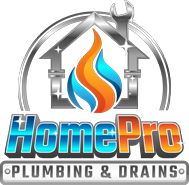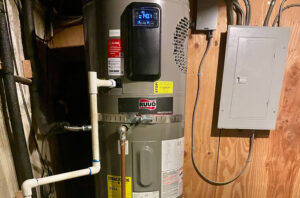▷Step-by-Step Guide to Remove Existing Heater for Heat Pump Water Heater Installation In San Diego
Step-by-Step Guide to Remove Existing Heater for Heat Pump Water Heater Installation In San Diego
Looking to make your home more energy-efficient and environmentally friendly? Installing a heat pump water heater could be the solution you need. Contrary to traditional water heaters, these innovative systems can significantly reduce your energy bills while lowering your carbon footprint. With our five expert tips, you’ll be equipped to install a heat pump water heater efficiently and effectively. From selecting the right location to ensuring proper maintenance, we’ve got you covered. Get ready to upgrade your home with sustainable technology and enjoy the benefits of a more eco-conscious lifestyle.
Preparing for Installation
Remove Old Heater
To start the process, disconnect the power supply and water lines from the old heater. Next, drain the tank completely.
Clean Up Area
Clear the space around the installation area to ensure easy access for the new heat pump water heater. Dispose of the old unit properly.
Prepare Plumbing
Begin by shutting off the main water supply before proceeding with any plumbing work. Check for any leaks or damages in the existing plumbing system.
Installing the Heat Pump Water Heater
Position Heater
To ensure optimal performance, properly positioning the heat pump water heater is crucial. Place it in a well-ventilated area with at least 1,000 cubic feet of space around it. This allows for efficient air circulation, enhancing its functionality.
When installing the heater, avoid tight spaces or areas with high humidity levels. The ideal location is a spacious room with good airflow to prevent overheating and ensure the unit operates effectively. Ensure there are no obstructions blocking the airflow around the heater.
Connect Pipes
Connecting pipes accurately is essential for the efficient operation of a heat pump water heater. Use high-quality materials like copper or PEX tubing for durability and longevity. Properly connect the cold-water inlet and hot-water outlet pipes to the corresponding ports on the heater.
When connecting the pipes, ensure they are securely fastened to prevent leaks. Tighten all connections using appropriate tools to avoid any potential water damage. Regularly inspect the pipes for any signs of leakage or wear and tear to maintain the system’s efficiency.
Manage Condensate
Managing condensate is an important aspect of maintaining a heat pump water heater. Install a condensate drain line to safely remove excess water produced during operation. Regularly check and clean the drain line to prevent clogging and ensure proper drainage.
Proper condensate management helps prevent issues such as water damage and mold growth. By maintaining a clear condensate drain line, you can ensure the efficient operation of your heat pump water heater for years to come.
Finalizing Installation
Fill Tank
To complete the installation, fill the tank with water before turning on the heat pump water heater. Make sure to follow the manufacturer’s guidelines for the correct water level.
Ensure the water inlet valve is open to allow water to flow into the tank. Slowly fill the tank to prevent airlocks and ensure proper functioning of the heater.
Electrical Connection
Connect the electrical wiring according to local electrical codes and the manufacturer’s instructions. Ensure all connections are secure and insulated to prevent any electrical hazards.
Check that the power supply is off before making any electrical connections. Once everything is properly connected, switch on the power supply to activate the heat pump water heater.
Start Heater
After filling the tank and completing the electrical connections, it’s time to start the heater. Turn on the heat pump water heater using the control panel or thermostat settings.
Allow some time for the water to heat up to the desired temperature. Monitor the heater’s performance initially to ensure it is working efficiently and providing hot water as expected.
Ensuring Optimal Performance
Choose Right Capacity
When selecting a heat pump water heater, ensure to choose the right capacity based on your household’s hot water needs. Consider factors like the number of occupants and daily hot water usage.
- Pros: Proper capacity ensures sufficient hot water supply, while an undersized unit may lead to inadequate heating.
- Cons: Oversized units can lead to energy wastage and higher upfront costs.
To determine the ideal capacity, calculate the peak hour demand in your home. This is the maximum amount of hot water used within an hour. Consult with a qualified contractor for guidance on selecting the appropriate size.
Hire Qualified Contractor
A crucial step in ensuring optimal performance is hiring a qualified contractor for the installation of your heat pump water heater. Look for professionals with experience in installing these systems.
- Key Information: Qualified contractors can ensure proper installation, maximizing efficiency and longevity of the unit.
- List of Examples: Seek recommendations from friends or family, or research online reviews to find reputable contractors.
Maintenance and Care
Verify Installation
To ensure your heat pump water heater operates efficiently, verify the installation by checking for proper electrical connections and plumbing. Look for any signs of leaks or loose fittings.
Test Functionality
After installation, it’s crucial to test the functionality of the heat pump water heater. Turn on the unit and check if it heats water effectively and maintains the desired temperature. Ensure all settings are adjusted correctly.
Schedule Checks
Regular maintenance checks are essential for the longevity of your heat pump water heater. Schedule quarterly inspections to clean filters, check for sediment buildup, and ensure all components are working optimally.
FAQs
What Are The Essential Steps For Preparing For The Installation Of A Heat Pump Water Heater?
To prepare for installing a heat pump water heater, ensure proper electrical connections are available, clear the installation area, gather necessary tools, and read the manufacturer’s installation manual thoroughly.
How Is A Heat Pump Water Heater Installed?
The heat pump water heater is typically installed by connecting it to the water supply and electrical system, positioning it correctly, insulating pipes, and testing for leaks before finalizing the installation.
What Tasks Are Involved In Finalizing The Installation Of A Heat Pump Water Heater?
Finalizing the installation includes securing all connections, adjusting settings as per manufacturer guidelines, ensuring proper ventilation, and conducting a test run to verify functionality before completing the setup.
How Can I Ensure Optimal Performance From My Heat Pump Water Heater?
To optimize performance, set the thermostat at an efficient temperature, regularly check for leaks or unusual noises, maintain proper airflow around the unit, and schedule professional maintenance at least once a year.
What Maintenance And Care Practices Should Be Followed For A Heat Pump Water Heater?
Maintain your heat pump water heater by regularly checking filters, cleaning coils, inspecting for corrosion, flushing the tank annually, and addressing any issues promptly to prolong its lifespan and ensure efficient operation.
With these tips on installing and maintaining your heat pump water heater, you are now equipped to ensure efficient performance and longevity for your system. Proper preparation, correct installation, and regular maintenance are key to enjoying the benefits of a heat pump water heater. By following these guidelines, you can save energy, reduce costs, and contribute to a more sustainable environment.
Take charge of your home’s energy efficiency today by implementing these steps. Regularly check and maintain your heat pump water heater to maximize its performance and extend its lifespan. By staying proactive in caring for your system, you not only save money in the long run but also reduce your carbon footprint. Start implementing these tips now to enjoy a more energy-efficient and eco-friendly home.
Conclusion
Give Home Pro Plumbing a call right away to learn more about how our experts can help with leak detection in San Diego, CA.
Our Plumbing & Leak Detection Services
Related Posts

▷5 Benefits of Hydro Jet Plumbing: A Comprehensive Guide In San Diego
5 Benefits of Hydro Jet Plumbing: A Comprehensive Guide In San Diego Hydrojet plumbing is a…

▷Essential Tips for Installing a Heat Pump Water Heater In San Diego
Essential Tips for Installing a Heat Pump Water Heater In San Diego Did you know…

